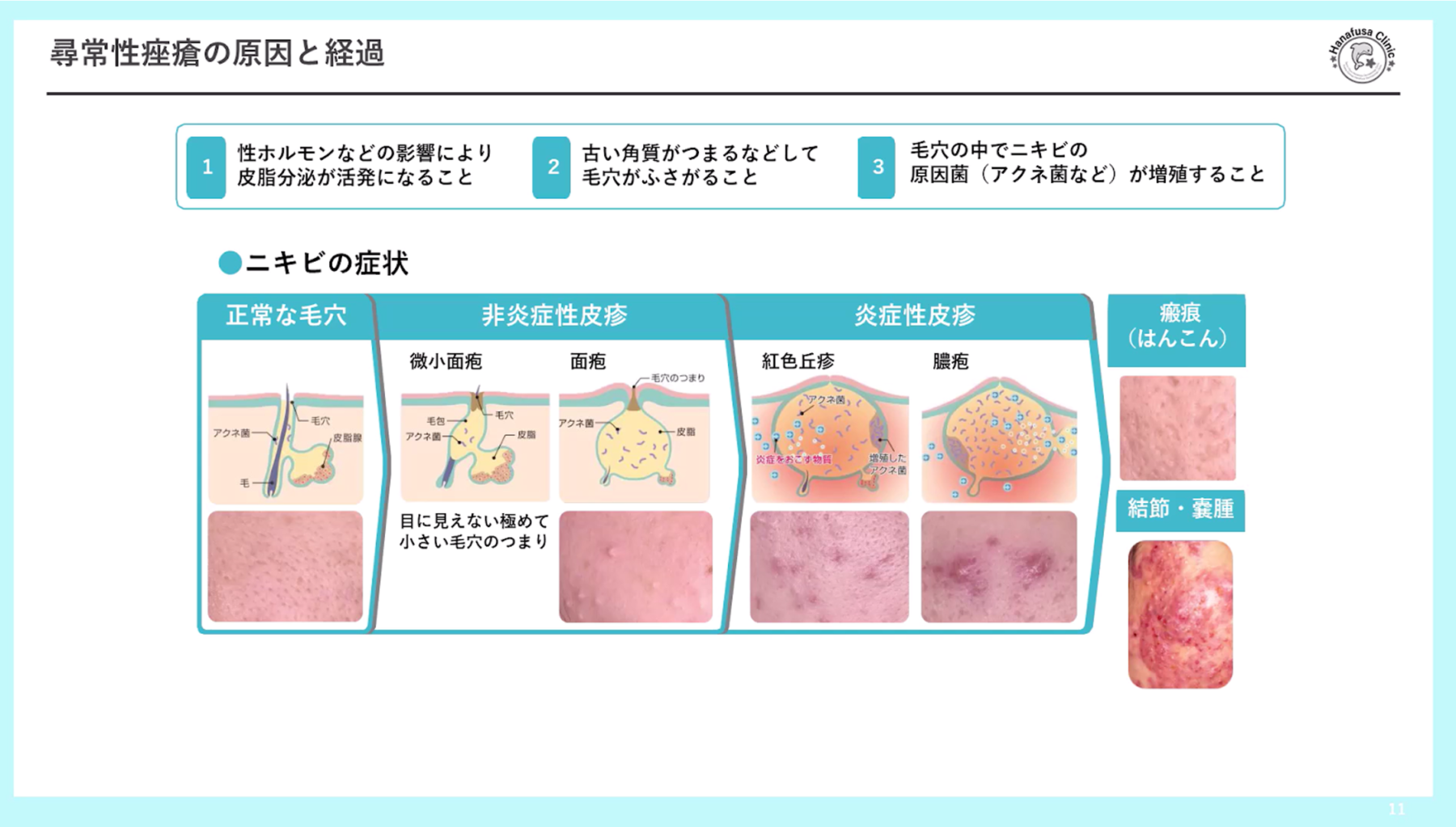
Almost no one is free of acne. Many patients suffer from acne not only during adolescence, but also in adulthood. Recently, new treatments and equipment have become available, and treatment options have diversified. This article discusses the latest findings in the treatment of acne and acne scars from four perspectives: mechanisms, treatments, complications, and patient education. The first part of the article focuses on insurance treatment of acne and provides useful information for clinical practice.
- INDEX
Pathogenesis mechanism and pathophysiology of acne (02:10~)
Acne is a factor that reduces quality of life. It is also clear that the number of acne scars is proportional to the severity of the disease. Treating acne as early as possible is therefore important.

The pathogenesis of acne is complecated by multiple factors, including increased sebum secretion, abnormal keratinization of hair follicles, proliferation of acne bacteria, and inflammatory response. In recent years, the involvement of inflammatory cytokines and the immune system has also come under close scrutiny, and research continues.
Acne begins with whitehead or blackhead acne. Inflammation progresses to red acne, nodules and cysts, and eventually scarring. Starting treatment at an early stage can reduce the number of scars.

Current trends in acne treatment (06:44~)

Acne is first treated within the scope of insurance coverage, such as antibiotic therapy and topical medications. If insurance treatment is not effective, a wide variety of treatments are available nowadays, including laser therapy, chemical peels, and iontophoresis. It is important to compare the efficacy, indications, and complications of each method and to provide guidelines for selecting the best treatment for the patient.
When taking antibiotics, it is the adverse drug reactions that should be noted. Caution should be exercised especially with the use of minocycline. It can cause nausea, vomiting, dizziness, and drug-induced pneumonia. It can also cause yellowing of the teeth, so it should not be used in middle school children who are still in the process of developing new teeth.
Benzoyl peroxide is used as a topical treatment for clogged pores. It should be noted that it is prone to contact dermatitis. It also has a bleaching effect, and if the agent gets on clothing or bedding, the color may fade in those areas.
Recently, the use of BPO preparations, adapalene preparations and their combination products are becoming more common. Both drugs require attention to skin dryness and should be informed to the patient in advance.
Importance of patient education in acne treatment (12:12~)

Proper information and guidance to the patient is critical in the treatment of acne. It is essential for patients to understand their own skin condition and be proactive in their treatment in order to achieve the best results. Therefore, we focus on patient education.
Explain that acne treatment is in a long haul: acne is a chronic disease, not an acute disease, and it is difficult to cure in a short period of time.
Explain that ongoing treatment is necessary: one session is not the end of the process and that regular visits/treatment are necessary.
Give the patient an overall picture of the treatment: Explain the duration and course of the treatment so that the patient can visualize the entire treatment process.
Proper patient education helps keep patient motivation for treatment high. This will help to increase patient cooperation with treatment.
Summary (14:37~)
Here, the latest findings on the treatment of acne/acne scars were described from 4 perspectives: mechanisms, treatments, complications, and patient education. Acne treatment advances daily, and options are increasing. Physicians must accurately assess a patient’s condition and formulate an optimal treatment plan based on the latest findings. Education is also crucial to create an environment in which patients themselves can actively engage in treatment.



